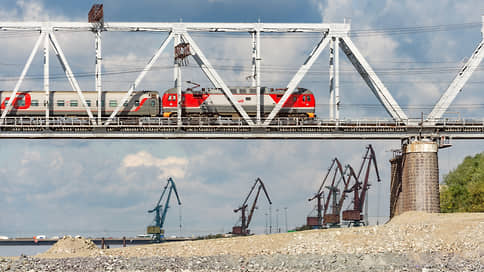Russia has settled down to China – Newspaper Kommersant No. 163 (7364) of 09/06/2022
[ad_1]

Ruslan Baisarov’s Bamtonnelstroy-Most and Gazprombank are considering the possibility of participating in the construction of a railway bridge across the Amur to restore the Dzhalinda-Mohe border crossing. At first, they plan to launch the crossing in a mixed mode – by ships in summer and by road in winter, and then move on to the construction of a railway bridge, which will also require the restoration of a 60 km section of the railway to Jalinda. The project is still undergoing a preliminary feasibility study, but is already included in the plans of the Ministry of Transport.
Bamtonnelstroy-Most and Gazprombank may take part in the construction of a new railway border crossing to China, Dzhalinda-Mohe. “A very interesting project, in the near future we will make a joint proposal with Gazprombank, and if the government of the Amur Region supports it, we will start this project,” said Ruslan Baysarov, the main shareholder of BTS-Most, at a meeting with the government of the Amur Region on September 5.
Gazprombank confirmed that they are interested in financing this project.
The Jalinda mixed checkpoint operated until 2008. Now, according to the administration of the Amur Region, there are no buildings, structures, communications, equipment and even fences in it, their restoration is impossible.
The new crossing is planned to be built in two stages.
At the first stage, it is planned to create a mixed border crossing – during the navigation period by ships, and during the freezing period – by road. At the second stage, it is planned to build a railway crossing with a bridge across the Amur.
Now the project is in the stage of financial and economic justification, its cost is not disclosed.
Vedomosti At the end of July, they wrote with reference to the presentation of the Ministry of Transport that the Jalinda-Mohe crossing is among the three border crossings and thousands of kilometers of tracks for which they plan to allocate $ 30.8 billion until 2030.
The cargo base of the transition in the presentation materials of the region is estimated at 20 million tons of coal, metal, ore and general cargo per year. However, representatives of the region themselves estimate it higher: 20 million tons from Kuzbass, 20 million tons from southern Yakutia, and at least 5 million tons of local cargo, including products from a methanol plant (a project of Grigory Berezkin’s ESN group).
There are two main problems. The first is the need for a complete modernization of the railway line from Skovorodino to Dzhalinda with a length of 60 km. According to the region’s government, Russian Railways is, in principle, ready to invest in this project. From the Chinese side, investments will also be needed, since Mohe is approximately the same distance from the border. Russian Railways declined to comment to Kommersant, noting that the parameters of the project are subject to clarification.
The second problem is the construction of the bridge, for which the optimal alignment is currently being selected. At the moment, according to the regional administration, preliminary technical and economic parameters are being determined, a group of partners is being formed – technical, financial and logistical.
The head of Infoline-Analytics, Mikhail Burmistrov, believes that now, when China is obviously becoming Russia’s main and uncontested trading partner, new border crossings are needed more than ever, since they allow unloading approaches to the ports of the Far East. Now there is no need to fear that such infrastructure will remain unclaimed, he says, everything will be loaded. “Yes, China will continue to limit the rate of acceptance of Russian cargo due to the zero-tolerance policy for the coronavirus, but we can’t do anything about it — we can only develop the infrastructure on our part, coordinating measures with Chinese partners to speed up operations and guarantee the safety of the cargo” he considers.
[ad_2]
Source link





